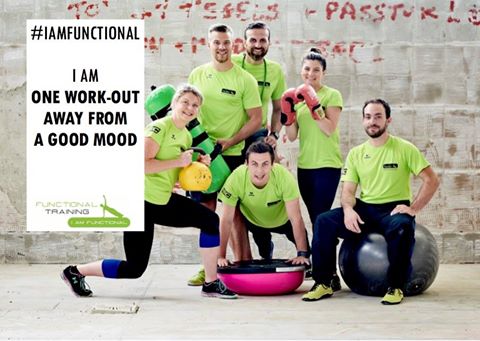Functional training: why, what & how. Functional training comes down to mimicking your daily movements. During a functional training workout, you’ll be focusing on the exercises themselves, rather than on your muscles as you would do during a regular workout. It’s, simply put, training with a purpose. There are 7 basic movements: Squat, lunge, pull, push, bend, turn and moving around. When choosing your exercises, always keep the following tips in mind:
- Every exercise has its’ purpose for both the training itself, as for your physique in the long run.
- Every exercise is either linked to a movement necessary to practice your sport, either it’s linked to a movement that forms part of your daily life.
- You’re training movements that you’d like to improve.
- You’re moving in a way that you perhaps haven’t done in a long time.
The benefits are numerous! It improves your balance and posture, helps with joint pain and reduces your risk of injury when you’re running or performing any other sport. It’s extremely good for your health, as it boosts your metabolism, which in turn burns fat at a high rate. Functional training also increases the ease of everyday life and increases your flexibility. It’s a low impact training, meaning that it won’t cause stress to your muscles and joints.
There’s even more good news: you don’t need any gym equipment, which saves you precious time and money. Instead, functional training uses the weight of your own body and sometimes a couple of small attributes. Again, it’s not at all about which attributes you’re using, but rather on the movements themselves.
Professional athletes have come to realize the added value of implementing functional training in their daily routine for a while now. Peter Sagan, world champion road cycling, for instance trains with the fitball on his Facebook profile. You’re only one 20 minute work-out away from a good mood!
